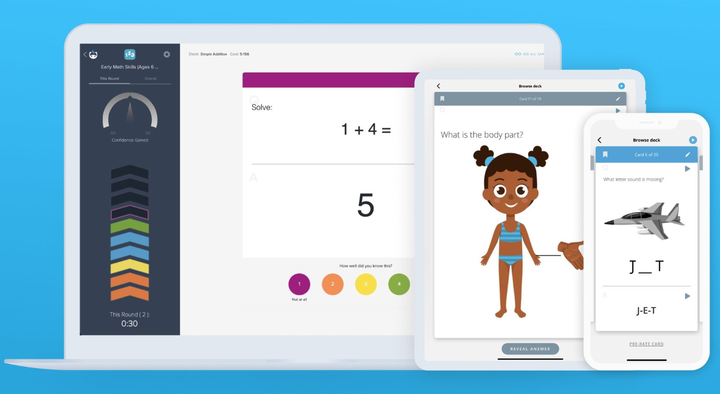
The Science Behind Microlearning
Learning Made Simple
Learning something new doesn’t have to take hours of your day. In fact, some of the most effective learning happens in just a few minutes. This is the idea behind microlearning—a modern way of learning that uses short, focused lessons to teach you important skills or knowledge. Microlearning makes learning easier. It breaks information into small, digestible parts. This way, lessons are quicker and simpler to remember.
This method works well for many people because it fits into daily life. You can learn during a coffee break, on the bus, or even while waiting in line. It’s flexible, quick, and practical. It’s also supported by science—research shows that short bursts of learning can help you remember more and feel less overwhelmed.
Microlearning is used by students, teachers, businesses, and even people who are just curious about a new topic. Microlearning can help you grow your career, learn new skills, or gain knowledge. It’s a great way to learn without spending hours studying.
In this blog, we’ll cover why microlearning is important, how it works, and how you can use it to boost your learning with short lessons.

Why Microlearning Matters
It Matches How the Brain Works
Our brains are wired to learn in small chunks. Long lectures can feel overwhelming. They make it tough to stay focused and remember details. Microlearning fits how our memory works. It offers short lessons that are easy to repeat and review. This makes it easier to store knowledge in long-term memory.
It Fits Modern Schedules
With so many demands on our time, not everyone can set aside hours for studying. Microlearning works well in short breaks—during a commute, over lunch, or between tasks. This makes it accessible and flexible.
It Supports Continuous Learning

Instead of cramming information in one go, microlearning promotes regular, spaced learning. This leads to better retention over time. It also builds a habit of daily learning, which helps with long-term skill growth.
Key Benefits of Microlearning
1. Better Focus and Engagement
Short lessons keep attention high. Learners are less likely to get bored or distracted. Interactive formats like videos, quizzes, and short readings help hold interest.
2. Faster Knowledge Retention
Science shows that people remember information better when it’s delivered in small doses. Repetition over time, combined with shorter content, improves how much you retain.
3. Personalised and On-Demand Learning
Microlearning allows people to choose what they want to learn, when they want to learn it. You can focus on the topics that matter most to you and skip what you already know.
4. Easier to Fit into Workflows
For businesses and teams, microlearning is perfect for training. Employees can learn something useful in 5–10 minutes without stopping their workday.
How Microlearning Works: The Science Behind It
Chunking Information
Psychologists say our brains hold 4–7 bits of information at once. Microlearning breaks big topics into “chunks” that are easier to understand. Each chunk covers one idea or task at a time.
Spaced Repetition
This technique involves repeating key information over time instead of all at once. Microlearning fits perfectly with this model. You can revisit short lessons again and again without feeling overwhelmed.
Active Recall and Testing
Microlearning often includes mini-quizzes and practice questions. These help with active recall—pulling information from memory instead of just re-reading. This makes learning stick longer.
Expert Tips for Success with Microlearning
1. Set Clear Learning Goals
Know what you want to achieve before you start. Whether it’s learning a new tool, improving a soft skill, or studying for a test, having a goal helps you choose the right micro-courses.
2. Create a Regular Routine
Learning is more effective when it becomes a habit. Try setting aside 10–15 minutes each day for microlearning. Small steps add up over time.
3. Mix Formats for Better Results
Use a mix of formats—videos, infographics, quizzes, and short texts. This variety keeps learning fresh and makes it easier to understand complex ideas.
Common Mistakes to Avoid
1. Skipping Reflection Time
It’s tempting to jump from one short lesson to the next. But take time to reflect on what you’ve learned. Write a summary or share it with someone else to make it stick.
2. Ignoring Learning Gaps
Microlearning is powerful, but it’s not a full replacement for deep study. Use it to build knowledge over time, but don’t rely on it alone for complex topics.
3. Choosing Quantity Over Quality
More lessons don’t always mean better learning. Focus on well-made, targeted micro-courses that align with your goals.
Advanced Insights and Expert Recommendations
Microlearning in Corporate Training

Leading companies use microlearning to train teams faster and better. It helps with onboarding, safety training, and skill building. It’s cost-effective and increases productivity. Employees spend less time training and more time using what they learn.
Microlearning in Education
Teachers and schools now use microlearning to support homework, revision, and catch-up learning. It helps students who need extra support or struggle with long reading assignments.
The Role of Mobile Learning
Smartphones make microlearning even more accessible. Learners can access short lessons anytime, anywhere. Many apps offer bite-sized courses that you can complete during short breaks.
Conclusion: Small Lessons, Big Results
Microlearning proves that learning doesn’t have to be long or complicated to be powerful. Breaking big topics into smaller parts makes them easier to understand and remember. You don’t need to spend hours in front of a screen. Just a few minutes each day can really help—if the lessons are clear, focused, and timely.
This way of learning fits into busy lives. Microlearning helps everyone, from students to working professionals. It’s great for anyone who likes to learn in their free time. You can learn at your own pace, repeat lessons when needed, and apply what you’ve learned almost right away.
Many companies, schools, and learning platforms now use microlearning. It’s effective. And as more people discover how helpful it can be, it is likely to become an even bigger part of education and training in the future.
If you’re looking for a way to learn that saves time and still gets results, microlearning is a smart place to start. It’s learning made simple, and it’s made for you.


